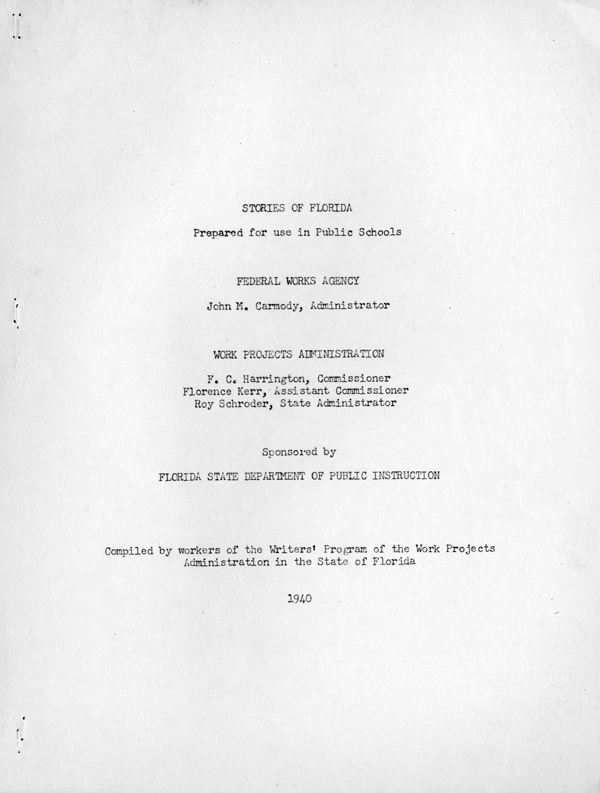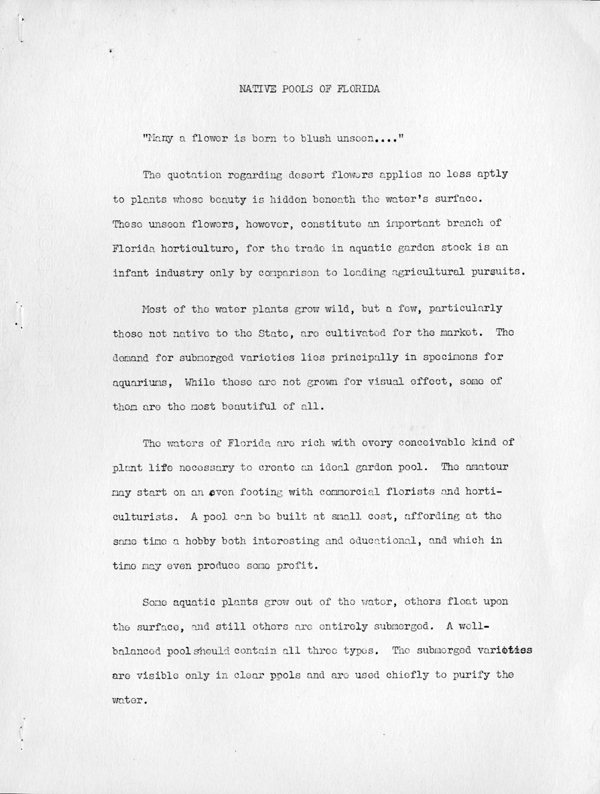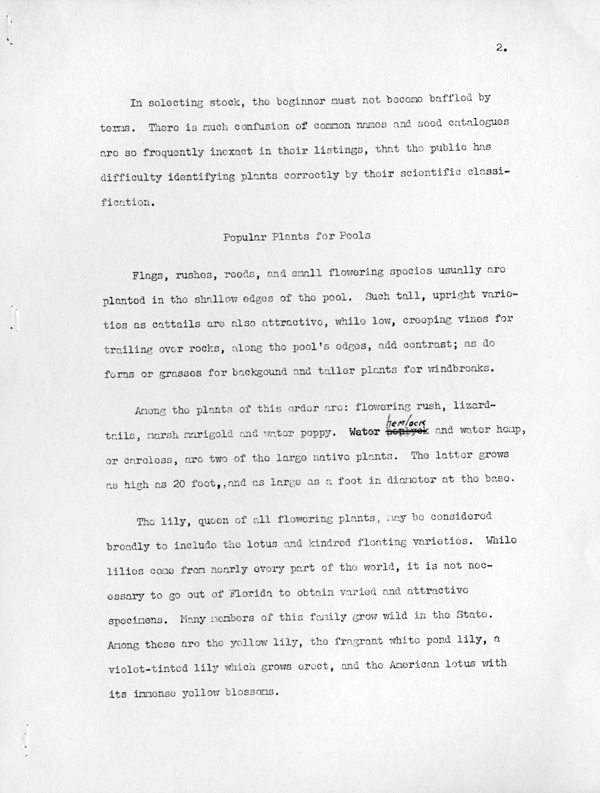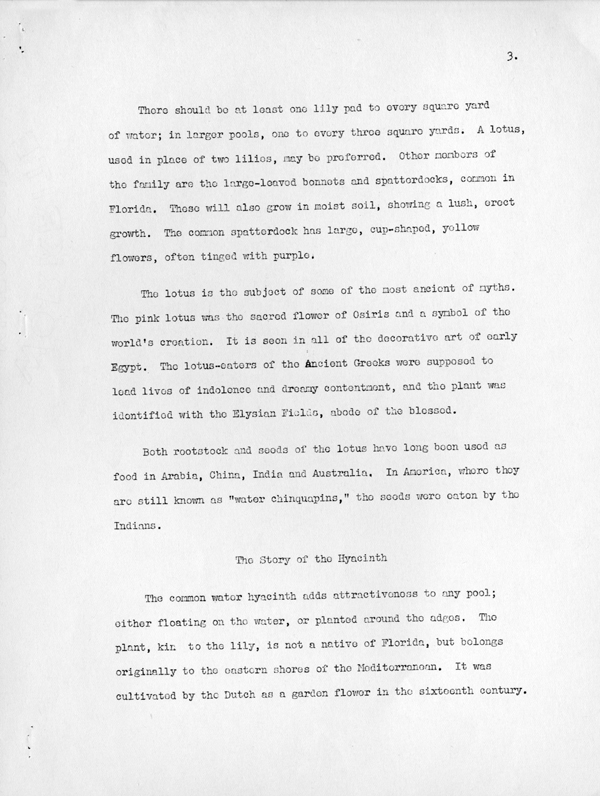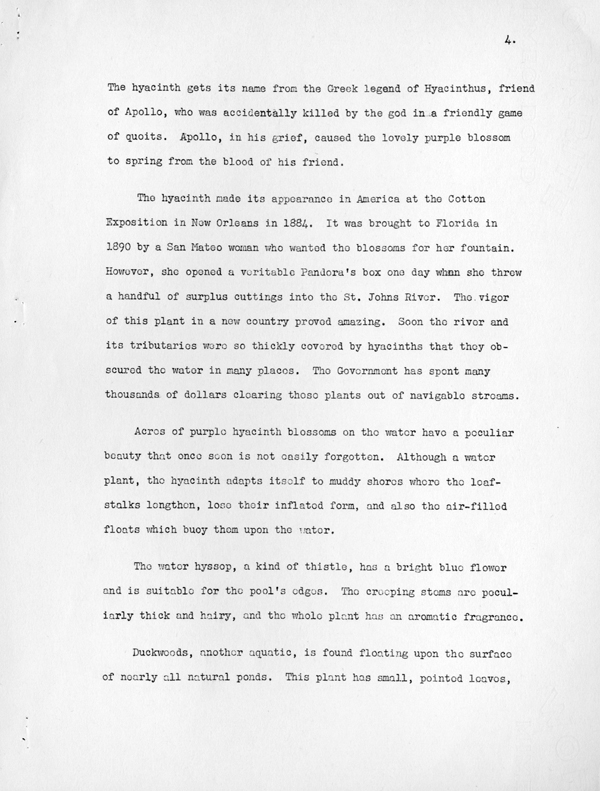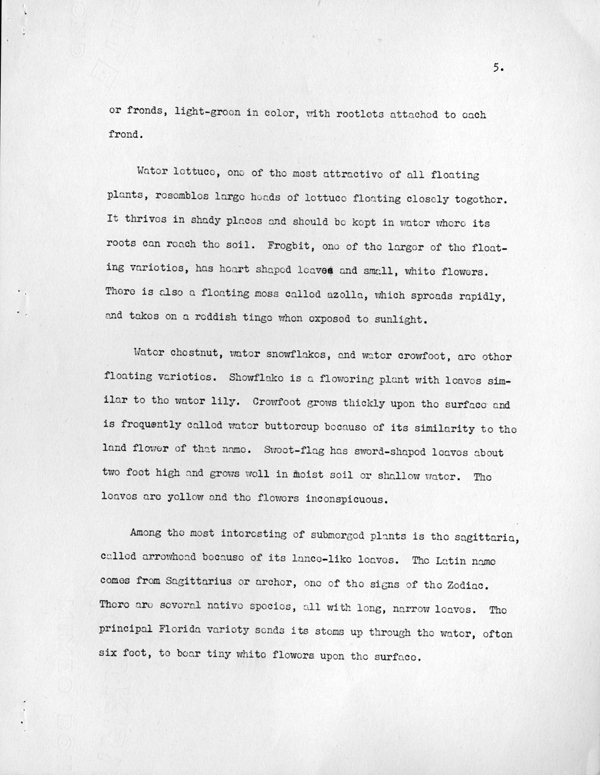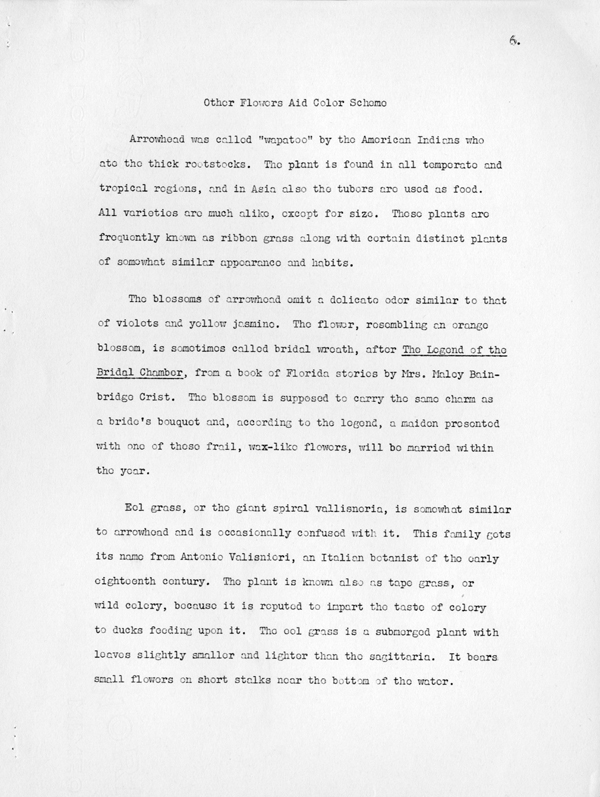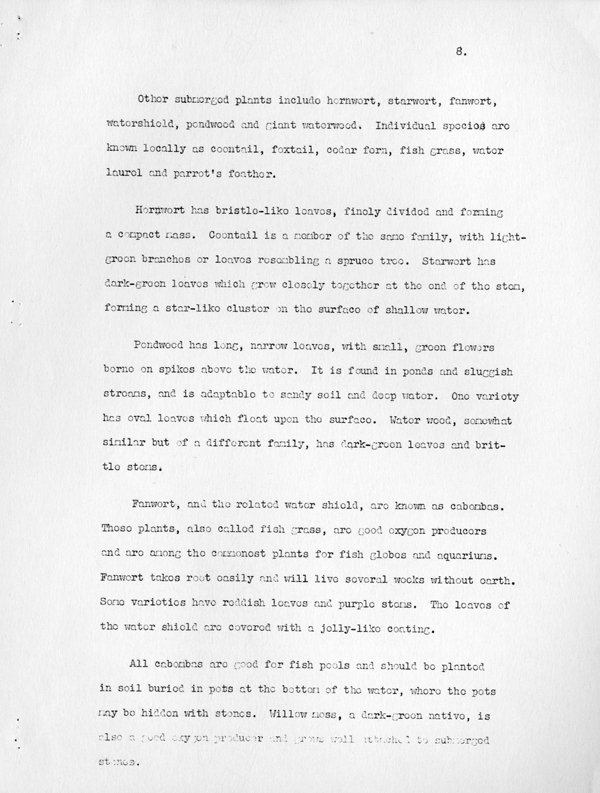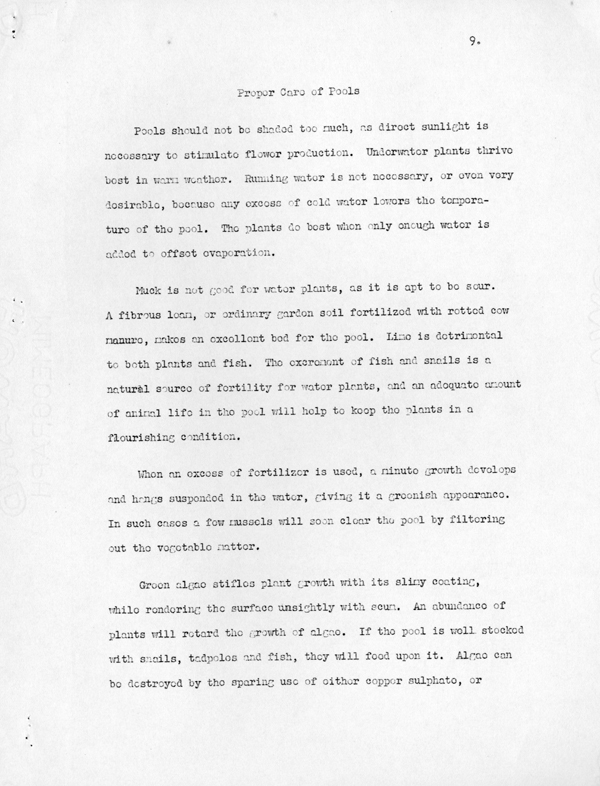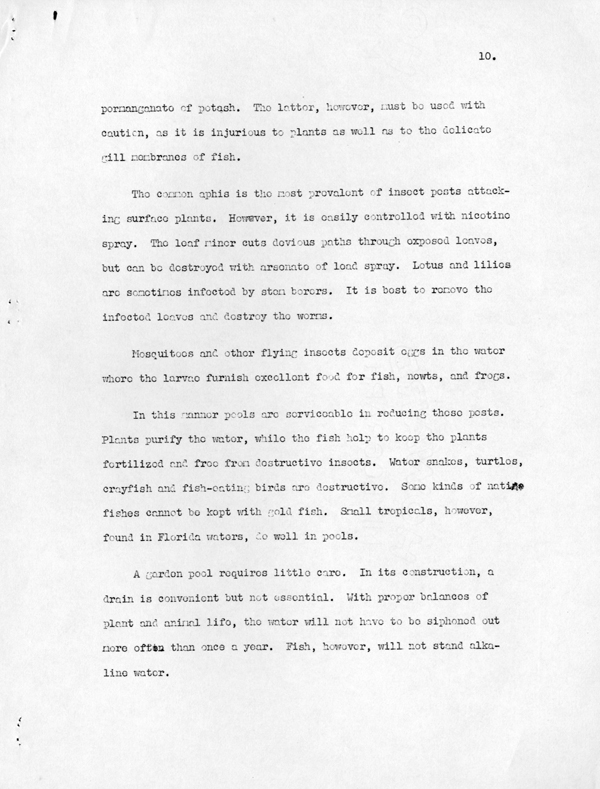Florida Memory is administered by the Florida Department of State, Division of Library and Information Services, Bureau of Archives and Records Management. The digitized records on Florida Memory come from the collections of the State Archives of Florida and the special collections of the State Library of Florida.

State Archives of Florida
- ArchivesFlorida.com
- State Archives Online Catalog
- ArchivesFlorida.com
- ArchivesFlorida.com
State Library of Florida
Related Sites
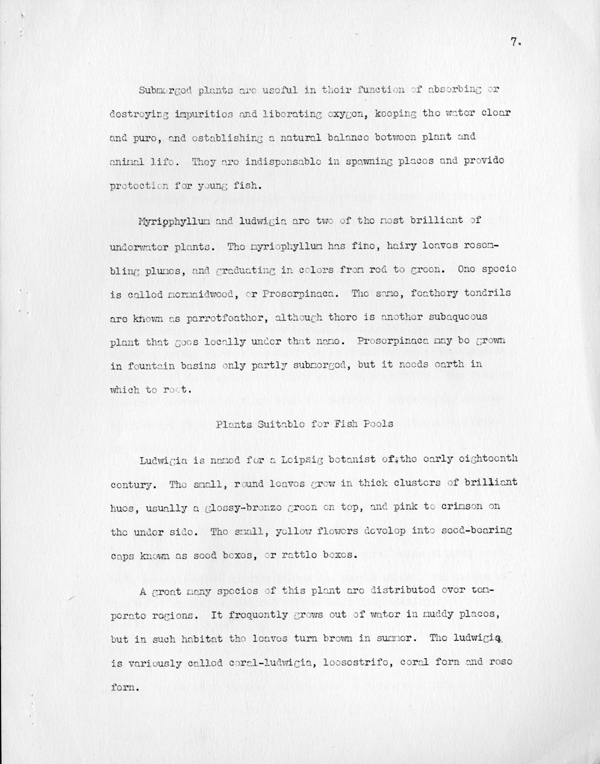
Description of previous item
Description of next item

Title
Published Date
[page 7]
Submerged plants are useful in their function of absorbing or
destroying impurities and liberating oxygen, keeping the water clear and
pure, and establishing a natural balance between plant and animal life.
They are indispensable in spawning places and provide protection for young
fish.
Myripphyllum and ludwigia are two of the most brilliant of
underwater plants. The myriophyllum has fine, hairy leaves resembling
plumes, and graduating in colors from red to green. One specie is called
mermaid weed, or Proserpinaca. The same feathery tendrils are known as
parrotfeather, although there is another subaqueous plant that goes locally
under that name. Prosorpinaca may be grown in fountain basins only partly
submerged, but it needs earth in which to root.
Plants Suitable for Fish Pools
Ludwigia is named for a Leipsig botanist of the early eighteenth
century. The small, round leaves grow in thick clusters of brilliant hues,
usually a glossy-bronze green on top, and pink to crimson on the under side
[sic]. The small, yellow flowers develop into seed-bearing caps known as
seed boxes, or rattle boxes.
A great many species of this plant are distributed over temperate
regions. It frequently grows out of water in muddy places, but in such
habitat the leaves turn brown in summer. The ludwigia is variously called
cereal-ludwigia, loosestrife, coral fern and rose fern.
Title
Subject
Description
Source
Date
Contributor
Format
Language
Type
Identifier
Published Date
Image URL
Thumbnail
Transcript Path
Image Path
Image Path - Large
Chicago Manual of Style
Native Pools of Florida. 1940. State Archives of Florida, Florida Memory. <https://www.floridamemory.com/items/show/181528>, accessed 22 December 2025.
MLA
Native Pools of Florida. 1940. State Archives of Florida, Florida Memory. Accessed 22 Dec. 2025.<https://www.floridamemory.com/items/show/181528>
AP Style Photo Citation

 Listen: The Folk Program
Listen: The Folk Program
